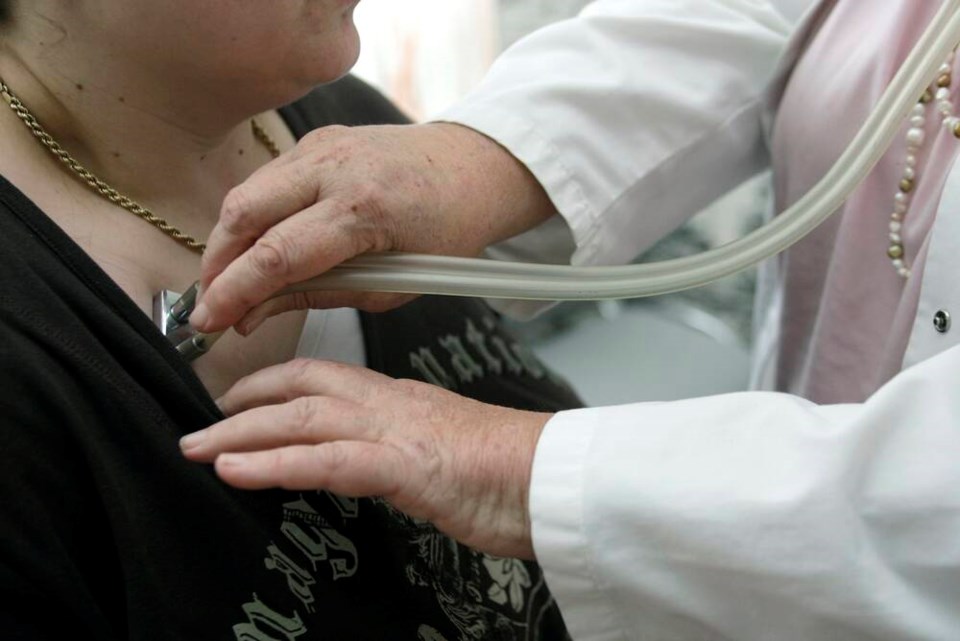A commentary by a retired family physician.
I was heartened to read the commentary “No doctors plus no action equals no doctors,” by Prof. Adrian Fine.
He raises some valid points. A solution would be to markedly increase the number of physicians graduating, but a better and quicker alternative would be to enhance the productivity of the physicians we have.
This will require dedication and flexibility from our physicians, but also marked fiscal input from all levels of government. The current situation is expensive — both in quality of life and in dollars — and the solution will be no cheaper.
Probably, however, no more expensive — but significantly more effective.
I feel somewhat responsible for this current situation — not really, but there is some history that will put the current mess into perspective.
I came to Victoria in 1978 and set up in family practice. At that time, I practised just like all the other family physicians; a typical day for any of us was:
• Leave home well before sunrise to do hospital rounds — now done (better) by hospitalists.
• Go to the office and see patients and deal with office matters.
• Leave the office to go to the operating room to assist for major surgeries — now done by full-time “dedicated surgical assistants.”
• Follow patients in the nursing home with either visits or phone calls — now done by “medical directors.”
• Full obstetrical care — before the days of midwives — now done by a few “obstetrics only” physicians.
• House calls, both urgent and chronic care.
• Minor surgery in the office and in the hospitals — now undertaken by former family physicians who specialize in this full time.
• Emergency coverage 24/7 including night calls.
• Cover both hospitals for emergency room visits.
• Almost every day I took home one or two hours of paperwork.
For the first 25 years or so, I was practising against the chronic background of commentaries, from Dr. Michael Rachlis and similar, that there were too many physicians performing too many tests driving up the cost of medical care. This was such a serious theory that medical school places were actually reduced.
This concept gradually calmed down, but there was a rapid change in Victoria when the hospitals began employing hospitalists.
This was a good measure in that the complexity of in-hospital care was increasing, and could not be dealt with satisfactorily by the then on-the-fly busy family physicians. The result, however, is that Victoria alone is having to adjust to 60 or so fewer family physicians; this was just one of many steps towards the now “physician shortage.”
Also at this time, family physicians attended to assist at surgery — though useful in regard to longitudinal patient care — turned out to be a scheduling nightmare for the hospitals, and so several primary care physicians gave up their office practice to become full-time surgical assistants.
From 1978 to present time, there have been innumerable advances in medical care worldwide. The result for family physicians is that record-keeping had to be improved and maintained to a very high standard.
The knowledge base for an average primary care physician has to include dealing with solid organ transplants, joint replacements, advances in obstetrical care and a relentless increase in chronic disease management (diabetes, hypertension, heart failure, cancer, kidney disease…).
For many years, I have had the privilege of scrutinizing medical practices throughout British Columbia. The enduring conclusion I come to from these, is that larger groups of family physicians with adequate support staff have the most fulfilled physicians and the most contented patients.
I have long felt that there is a need for each family physician to have available the medical equivalent of a paralegal, such as a university graduate who could safely transcribe dictated records. Somebody to assist in completing the hundreds of forms and other necessary bureaucratic chores.
Each large group practice should have an adequate supply of college trained medical office assistants, registered nurses, licensed practical nurses, podiatrists, physiotherapists, pharmacists, respiratory therapists — as well as an in-house ready access to mental health professionals.
By the time a patient meets the physician, test results should have been obtained, the presenting problem roughly outlined, medications reviewed by an in-house pharmacist, the vital signs recorded, and if necessary the patient prepared appropriately with regard to draping or gowning.
It has to be accepted that the way medicine is delivered now is neither safe nor satisfactory. There are the complex advances in medical science and there is a new generation of medical professionals who are not willing to work 80- or 100-hour weeks.
There is no point in looking for a cheaper system, but a more productive delivery system should be explored; begin by providing primary-care physicians with the space and tools to work as a team member — for a fair remuneration and for a safe and healthy 21st-century lifestyle.

.jpg;w=120;h=80;mode=crop)


